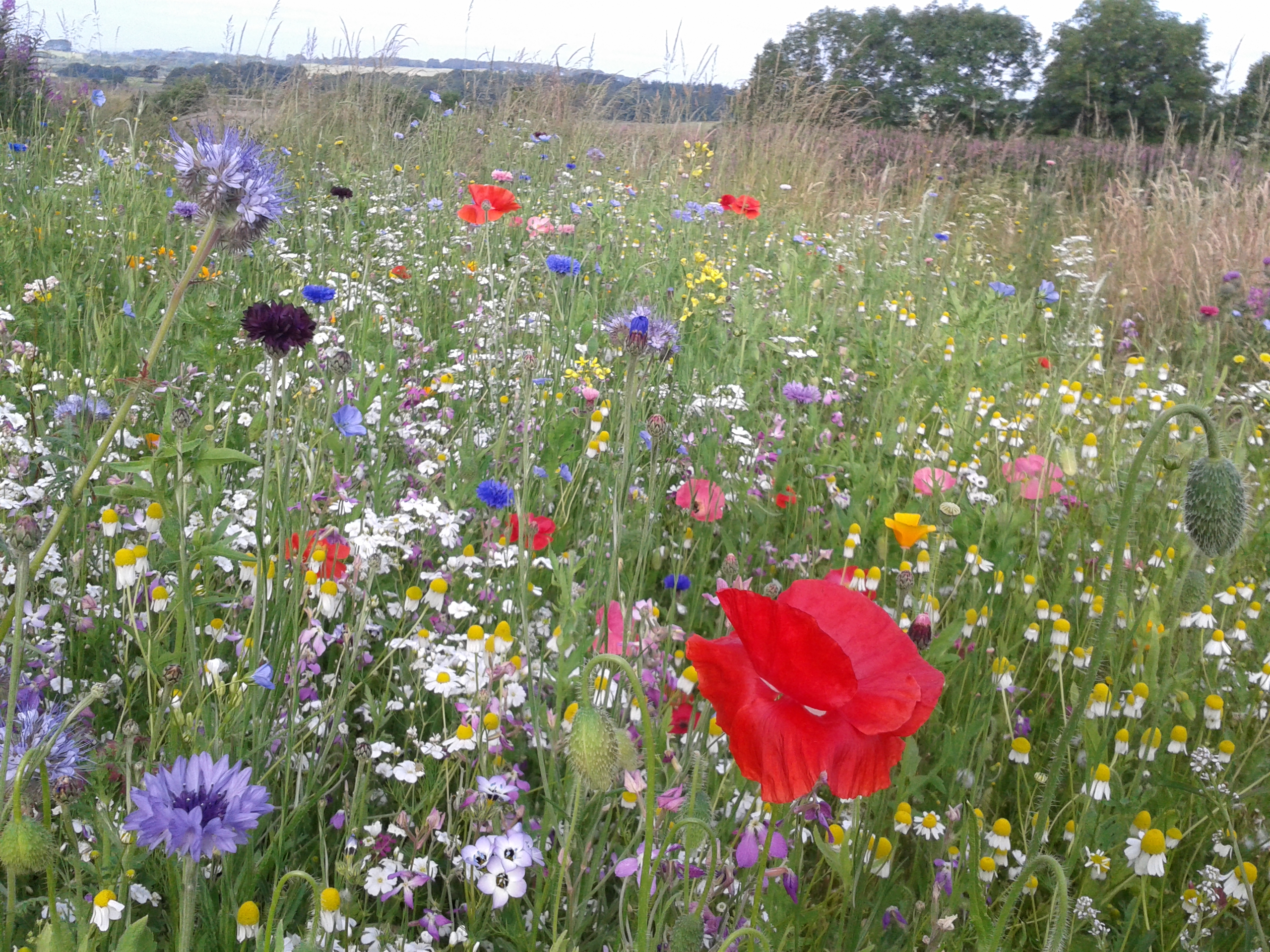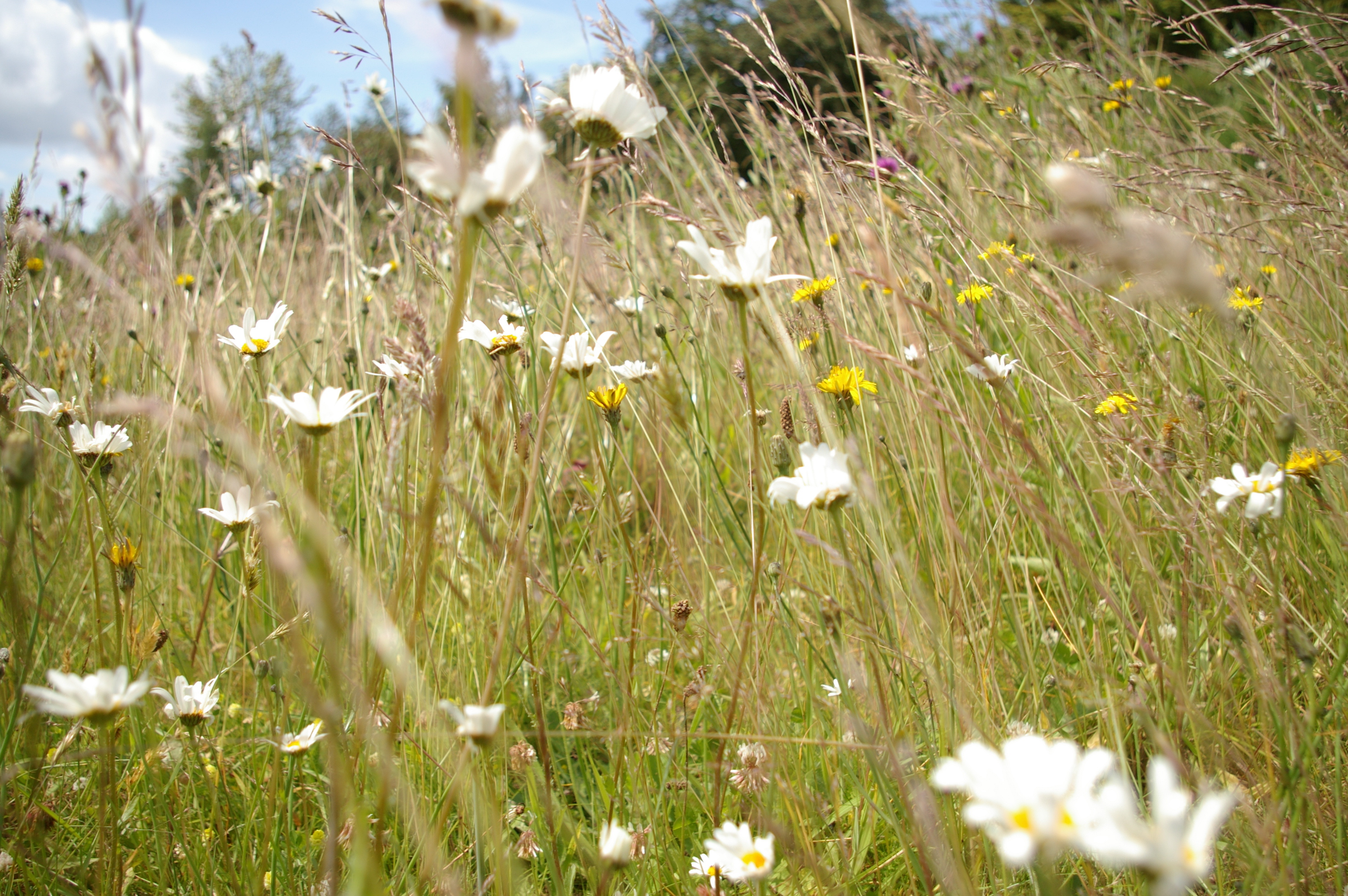Simple Ideas to help Pollinators
| Site: | OpenLearn Create |
| Course: | Planting for Pollinators |
| Book: | Simple Ideas to help Pollinators |
| Printed by: | Guest user |
| Date: | Thursday, 25 April 2024, 8:55 PM |
Description
10 simple things you can do to help pollinators in your garden
1. Plant Pollinator-friendly Plants
If you plant pollinator-friendly plants you can get your garden buzzing all year round and know that you're helping to feed lots of pollinating insects! Gardening is a national pastime here in the UK - an estimated 23 million households (87% of homes) have access to a garden and there are over 330,000 allotments in the UK. This means that there are many places where we can find some space to plant pollinator-friendly plants and so make a huge contribution to pollinator conservation.
If you already have an established garden, consider what plants you have and see if you can complement that to ensure there are flowers to provide nectar and pollen from early spring through to late autumn. No flowers early or late in the year means bees starve, so try to grow a range of plants that can provide flowers at different times throughout the year. Key times of the year that are often missed are early in spring when queen bees are emerging from hibernation and need rich sources of nectar and pollen to establish their nests. Late summer/autumn is also an important time to ensure there are lots of flowers around so that new queens can get enough food to hibernate successfully.
Another important thing to think about is providing a real range of different pollen and nectar rich flowers. This is because not all pollinating insects have the same length of tongue! Those with long tongues, including some bumblebees, moths and butterflies like to feed from flowers that are long and deep. For example, garden bumblebees have the longest tongue of any bee in the UK and typically forage at plants with deep flowers such as foxglove, dead-nettles and honeysuckle. Other pollinator species have short tongues and need to feed on nectar from small, open flowers. The early bumblebee has a very short tongue and most often feeds on small flowers like those of cotoneaster, or the open flowers of geraniums.
Learn More:
https://www.rhs.org.uk/science/conservation-biodiversity/wildlife/plants-for-pollinators
Further advice on pollinator friendly plants:
BeeWatch Planting for Pollinators tool www.abdn.ac.uk/beewatch
Butterfly Conservation - Gardening for Butterflies https://butterfly-conservation.org/how-you-can-help/get-involved/gardening/gardening-for-butterflies
2. Swap Bedding Plants with Pollinator-friendly plants

Many bedding plants produce little or no pollen and nectar, often as a result of selective breeding by horticulturalists for their pleasing appearance. Avoid planting showy double flowers - bumblebees can't feed on them. Plants like pansies and double begonias offer little for bumblebees and other pollinators.
Learn more:
https://bumblebeeconservation.org/images/uploads/Garden_centre_pack_FINAL.pdf
3. Plant up window boxes and containers
Much of our surviving wildflower-rich habitat now exists as small fragments across the countryside, making it difficult for pollinating insects to get all the food they need from wildflower meadows. By growing pollinator-friendly flowers we can help pollinators by providing feeding, nesting and hibernating areas that have been lost by the reduction in natural wildflower-rich habitats. You don't even need a big garden to help - if you have paving, decking or limited space you can plant containers, hanging baskets or window boxes with pollinator-friendly plants. There are a great range of herbs and wildflowers to choose from and planting a diversity of species will ensure that there are flowers from March to end of September - just what our pollinators need. Even a single lavender plant in a pot is very beneficial as it has a really long flowering season, is very easy to keep and is a firm bumblebee favourite!
Reducing the distance between flowering sources is crucial as flying takes up a lot of energy - a third of a bumblebee's daily energy intake is spent foraging for nectar and pollen. This is especially important for smaller bumblebees like the early bumblebee, which only flies approximately 250-650 m away from it's nest to feed (average foraging trip = 20 mins). Compare this to some of the larger bumblebees such as the buff-tailed bumblebee or the red-tailed bumblebee that can fly 1.5 - 2 kilometres away from their nests to feed (average foraging trip over 50 mins)! So providing pollinator-friendly flowering plants is crucial to feed our pollinators on their journeys between patches of wildflowers. Individuals actions like planting window boxes and containers can make a big difference to help conserve our pollinator populations.
And if possible avoid paving over large areas – no flowers means no pollinators!
Learn More:
http://www.lbka.org.uk/balconies.html
4. Keep Weeds

Keep some ‘weeds’ in the garden! Many species often considered to be weeds such as dandelions, daisies, buttercup and clover are a great source of pollen and nectar for pollinators. Dandelions can flower from March to October so can be a great source of food for pollinators early and late in the season. Nettles and thistles are also important for pollinators - small tortoiseshell butterflies lay their eggs on common and small nettles, the eggs then hatch into caterpillars that then eat the nettles! The caterpillars then pupate into adult butterflies.
Learn More:
5. Leave Areas of Lawn Unmown
Lawns can contain lots of flowering plants that are great for pollinators. Short uniform grass that is regularly cut will often have a low species diversity. Many species often considered to be weeds in a lawn like dandelions, daisies, buttercup, clover and speedwell are a great source of pollen and nectar for pollinators so it's worth leaving some areas for these to flourish. Dependent on what is already present in your lawn, you can stop mowing to allow some of the species already present to become established. Alternatively, you can plant some wildflowers into your lawn and then leave the lawn uncut for periods of the year so that the wildflowers can flower. Both these ideas are simple and cost effective ways to help insect pollinators such as bumblebees and butterflies.
Don't forget that lawns are also a really important nesting habitat for some bumblebees! Long grassy areas are just the type of habitat that common carder bumblebees like to nest in. The rarer brown-banded carder, moss carder and red-shanked carder bumblebees also like to nest in long grassy habitats. So if you leave a patch of lawn unmown you might be really lucky and get one of these rarer bumblebees nesting in your garden!
Learn More:

6. Go Pesticide-Free
Pesticides (including herbicides, insecticides and fungicides) have an overall negative effect on biodiversity and insects. This has been proven within the agricultural sector and in the wider countryside. Pesticides are still widely used in private gardens for weed and insect control, though they can harm bumblebees and other beneficial invertebrates, as well as the birds and other animals that feed on them. By replacing pesticides with non-toxic alternatives and implementing wildlife-friendly control methods, we can all help to support biodiversity.
There are many ways to adapt gardening practices to lessen the impact of weeds, pests and diseases as outlined below:
Plant selection – choose plants that are well suited to the soil type and local environment and varieties that show resistance to pests and diseases.
Crop rotations - avoid planting the same or similar crops in the same place for several years in a row as pests and nematodes will flourish.
Weeding – Regular weeding is effective for annual weeds and if repeated can destroy perennial weeds too.
Removal of pests and promoting natural predators pests - Heading out in your garden on damp evenings is a great way of removing slugs and snails. Encourage populations of ladybirds, hoverflies, lacewings, hedgehogs and toads as all help by eating aphids, slugs and snails.
Learn More:
https://www.rhs.org.uk/advice/profile?pid=817
7. Make some Bee-Homes
It can be quite difficult to encourage bumblebees to nest in a specific place - even specially designed nest boxes have limited success. Simple nests using flower pots that mimic mouse and vole nests can be successful though.
It is much easier to build a home for solitary bees. Unlike honeybees and bumblebees, solitary bees live and build their nests alone, usually in tunnels, hollow stems and beetle holes. You can easily create a hotel from bamboo or other tubes, and solitary bees will likely come and stay.
Learn More:
https://www.gardenersworld.com/how-to/diy/how-to-make-a-bumblebee-nest/
https://friendsoftheearth.uk/bees/make-a-bee-house
8. Grow a variety of plants
Pollinators need food all year round. So aim to try and have flowers in your space throughout the year. Different pollinators prefer different sized and shaped flowers. A variety of plants will help you achieve both of these goals.
Bulbs – planted in autumn, they will often provide early season flowers (crocus/ daffodils / hyacinth / alliums).
Perennial plants – these plants will come back year after year and are worth buying to ensure you have a beautiful space on a long-term basis.
Avoid ‘double flowered’ plants as pollinators often struggle to access the nectar. Common annuals such as ‘pansies’ offer almost no nectar for pollinators and although they look nice your money is better spent elsewhere.9. Planting for Butterflies
Some Butterflies need very specific plants for their eggs and for their caterpillars to feed on but we know a huge range of UK butterflies need grassland for their caterpillars.
Agree a green space that can be left to grow long – allowing wild plant species to establish amongst the grass that caterpillars can then feed on.These grass spaces can be cut in Spring or at the end of the flowering season. By leaving areas of nettles and thistle (both support 6 species of adult butterfly and a number of caterpillar species) will create spaces for butterflies.
For more information on the specific food plants of our 59 resident butterfly species see this table here on the UK Butterflies website.
To help you with more butterfly specific planting have a look at – Butterfly Conservation for planting ideas, identification help and much more.


10. Growing Fruit and Vegetables
Having fruit and vegetables growing can provide a wonderful resource for humans and wildlife alike. Fruit and Vegetables need pollinators and we need to help people to make this link and see how pollinators are essential to our food production. Don't forget to let some of your vegetables flower so that the pollinators can enjoy their nectar.
From growing beans and peas on your window ledges, to having a herb garden to provide a sensory experience… there are lots of ways you can bring food to life for all ages.There is nothing like learning as you grow – be bold and try.
Enjoy discussions and exploring what to grow (great information sheets here on a variety of fruit & vegetables and when to start ).
Easy plants to grow and impressive to look at include: Strawberries, raspberries, rocket or beans and peas. All of these have lovely flowers for pollinators too.
Fruit trees require more space – but can be bought in ‘dwarf stock’ so that your apple, pear and plum trees are never more than two meters tall. These are perfect for harvesting and are good for small spaces.